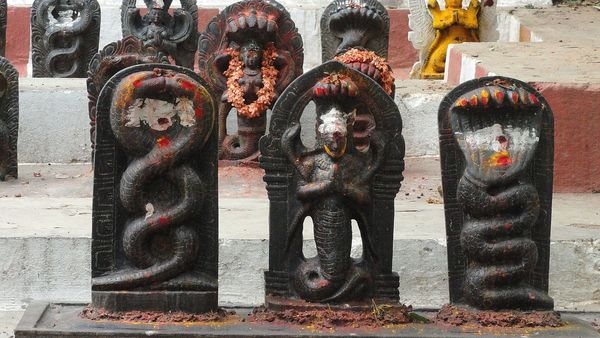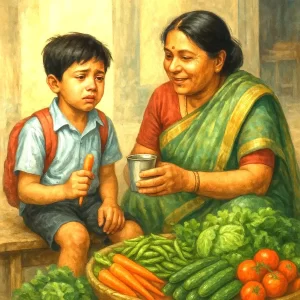![]()
Nagapanchami, a revered Indian festival, is dedicated to the worship of the snake-God, celebrated with fervor on the fifth day (Panchami) of the moonlit fortnight during the Hindu month of Shravan (July/August). This ancient festival, observed in August according to the Gregorian calendar, carries deep spiritual and cultural significance, rooted in Hindu mythology and tradition.
Origins and Significance of Nagapanchami
The exact origins of Nagapanchami are shrouded in mystery. The tradition of worshiping snakes, although unfamiliar to many, especially those outside Hindu culture, is deeply ingrained in Indian spirituality. Snakes have long been associated with Hindu deities, symbolizing power, protection, and cosmic balance. For instance, Sheshnaga, a serpent with six hoods, is depicted as the vehicle of Lord Vishnu, and according to Hindu cosmogony, the Earth rests on Sheshnaga’s head, with earthquakes occurring when he shakes his head.
Historical Roots of Snake Worship
The custom of snake worship is believed to have originated from the Naga clan, an advanced tribe in ancient India. Evidence from the Indus Valley Civilization, dating back to 3000 B.C., indicates the prevalence of snake worship among the Nagas, whose culture spread widely across India before the arrival of the Aryans. The Indo-Aryans later adopted the worship of many snake deities from the Nagas, and some of these deities are even mentioned in the Hindu Puranas.
Ancient texts, including the Rig Veda, Yajur-Veda, and Brahmanas, contain references to serpent worship, addressing snakes as denizens of the heavens, the Earth, and the waters. The ancient lawgiver Manu and classical Hindu literature, such as the Mahabharata and Bhagavad Gita, also mention the Nagas and Sarpas, highlighting the deep cultural and religious significance of these serpent deities.
The Mythology and Legends of Nagapanchami
Nagapanchami is steeped in legends and myths, many of which trace back to ancient Hindu scriptures. In the Mahabharata, the sage Astika halts a massive snake sacrifice by King Janamejaya, an event that later came to be commemorated as Nagapanchami. According to Hindu belief, snakes are associated with powerful deities such as Lord Vishnu, who is depicted resting on the serpent Adishesha, and Lord Shiva, who adorns a serpent around his neck.
Practical and Cultural Aspects of Nagapanchami
The timing of Nagapanchami, during the month of Shravan, coincides with the monsoon season in many parts of India, a period when snakes often leave their flooded homes and venture into human habitats. This increase in snake encounters, and the subsequent fear of snake bites, particularly in rural areas, likely contributed to the festival’s origin. Worshiping the snake-God during this time provided psychological comfort and was believed to offer protection from snake bites.
Rituals and Observances
Nagapanchami is observed with various rituals, including offering milk to snake idols made of silver, stone, or wood, and seeking the blessings of the snake deities for the well-being of the family. In some regions, live snakes, especially cobras, are worshiped with the help of snake charmers. This day is also significant for traditional Indian wrestling gyms (Akhara), where special celebrations are held to honor the snake as a symbol of virility and kundalini energy.
Nagapanchami is a festival that beautifully blends mythology, spirituality, and cultural traditions. Rooted in ancient practices and enriched by centuries of Hindu beliefs, this festival continues to be an important part of India’s religious landscape, offering insight into the deep reverence for nature and the mystical power of the serpent in Hinduism.
Reference: www.theholidayspot.com en.wikipedia.org






